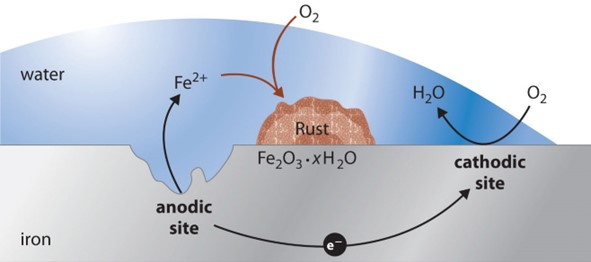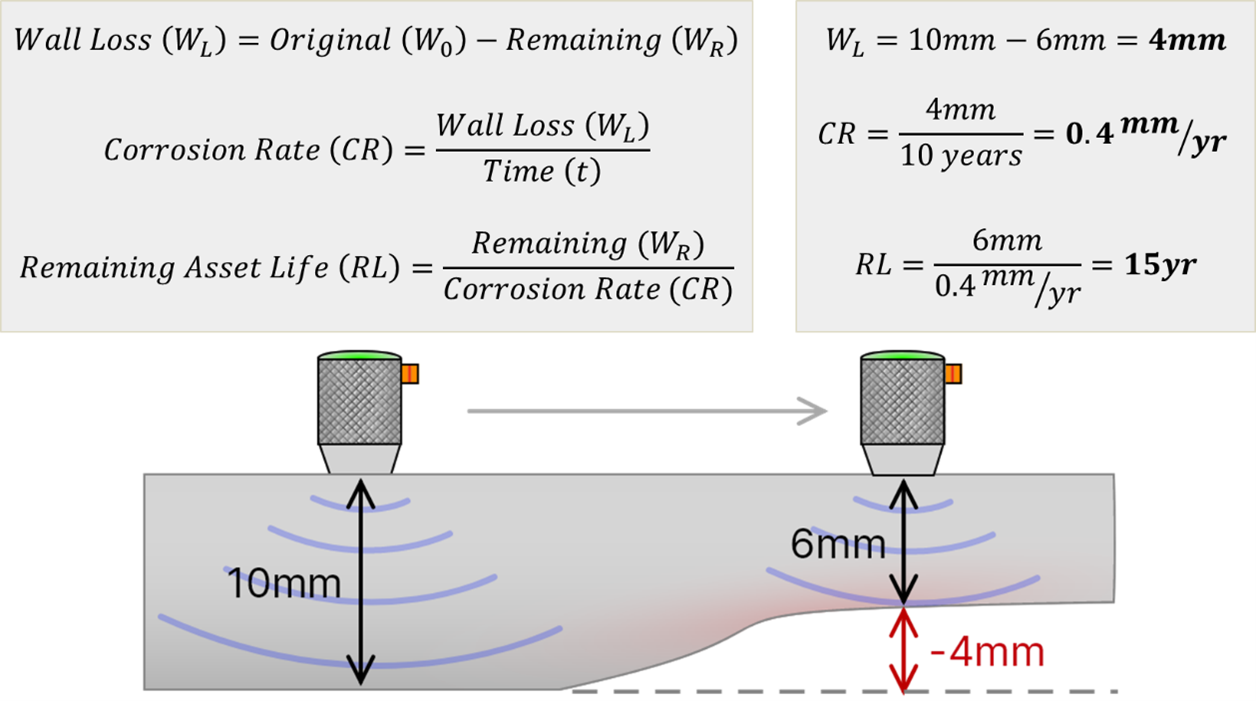Monitoring Uniform Corrosion with the Dakota CX Range
Monitoring Uniform Corrosion with the Dakota CX Corrosion Thickness Range
Application Overview:
The Dakota CX Corrosion Thickness Gauges are commonly employed to monitor the effects of uniform corrosion within different metal structures and assets by measuring the thickness of the walls and comparing them to their original dimensions. This article will explain what uniform corrosion is, how it occurs and which Dakota CX Corrosion Thickness gauge is best for your particular needs.
What is Uniform Corrosion?
Corrosion is a multifaceted chemical phenomenon that degrades industrial materials in a huge number of different ways and can be split broadly into two categories: uniform corrosion and localised corrosion.

Localised corrosion, as the name might imply, is concentrated into small areas across the surface of the affected metal and can result in cracks, crevices, cavitation and pitting. By contrast, uniform corrosion (also known as general attack) occurs over the whole surface area of an asset in a slower and more predictable manner.
In general, while localised corrosion can be much more dangerous to the structural integrity of an asset in the short term, the greatest overall destruction of metal by tonnage is caused by uniform corrosion. Despite being one of the ‘safer’ forms of corrosion, it’s still critical that the progression of wall loss from uniform corrosion is accurately evaluated and monitored; the thinner that something like a pipe or support becomes, the more vulnerable the asset becomes to the effects of localised corrosion and all other forms of damage. It can also significantly roughen and crack the surface of the metal in question, which makes more serious types of corrosion much more likely.
Why does uniform corrosion happen?

Corrosion happens as a result of chemical reactions between the metallic atoms of the asset in question and the environment that asset is located within. The most common form of corrosion we deal with in NDT is rust, also known as iron oxide, because iron alloys such as steel form the primary materials that comprise the overwhelming majority of man-made industrial equipment. Cast irons and steels will corrode when exposed to open atmosphere, soil and natural water, giving aged steel its characteristic red/orange hue.
Rusting is a combination of reactions in an electrochemical process that begins with the dissolution of iron atoms in water. This dissolution releases electrons into the solution which causes a current to flow from where the iron dissolved (the anode) to another spot on the iron that acts as a cathode. At the cathode, another reaction takes place between the water and oxygen, producing hydroxides (OH"-" ) which subsequently reacts with the dissolved iron to form iron hydroxide (Fe(OH)_2). A cycle is then created which causes oxygen to react with the iron hydroxide, freeing up space for more iron to dissolve and eventually forming iron oxide (Fe_2 O_3) which condenses out of the water and forms deposits on the surface on the iron.

This process accelerates as the concentration of water increases, especially if, like in seawater, the water contains salt. This is because salts increase the conductivity of the water, allowing for a greater rate of electron transfer away from the iron surface which speeds up the process of oxide formation. The reason it often develops uniformly across the entire surface is that moisture is present in the air in the form of humidity and will condense into micro droplets all over the exposed areas of metal, kicking off the electromechanical process.
How do you measure uniform corrosion?
One of the better ways to measure wall loss due to uniform corrosion is to use an ultrasonic thickness gauge, like those in the Dakota CX Corrosion Thickness range of products. An ultrasonic approach allows you to non-destructively measure the thickness of assets with access to only a single side, and it can be applied to a wide array of different types and dimensions of material.
For uncoated metals, the most common measurement mode is Pulse-Echo, which measures the time interval between the outgoing pulse and the first returning echo large enough to trigger the gate. Unfortunately this approach can run into difficulties with coated objects; for these types of inspections it’s common to utilise the Echo-Echo approach.
The Echo-Echo method by comparison measures between the first and second echoes received back which has the benefit of isolating the time during which the pulse is travelling through the metal, essentially ‘ignoring’ the coating thickness. The Dakota CX Corrosion Thickness Gauge is capable of using Echo-Echo mode on coated materials up to 25.4mm (1inch) thick.
Once you’ve accurately assessed the extent of wall loss, these measurements are used to calculate a ‘wall loss rate’ that can tell the asset owner when it needs to be replaced.

Which CX gauge is right for my application?
The Dakota CX4 Corrosion Thickness Gauge has all of the necessary features an operator would require to get a uniform corrosion inspection job done quickly and effectively. It’s capable of measuring in Pulse-Echo or Echo-Echo mode and it can utilise 1-point calibrations or its large library of reference acoustic velocities to stay accurate.
If you require data recording capabilities, the Dakota CX6-DL Corrosion Thickness Gauge does everything the Dakota CX4 Corrosion Thickness Gauge does, but with the addition of a 1,500 reading internal memory you can utilise the free DakMaster software package to more easily report your findings.
The Dakota CX8-DL Corrosion Thickness Gauge is the top-end of the CX range, and comes with a significantly improved data storage capability that includes calibration and limit memories, as well as a suite of additional display and statistics modes. Importantly, it’s also the only CX gauge to feature Grid Logging, which allows you to quickly and easily perform grid corrosion inspections that chart the wall loss status of entire sections of pipe over time.

Dakota gauge used in this application:
For more details on how the Dakota CX Corrosion Thickness Range can give an advantage to your inspection process.
